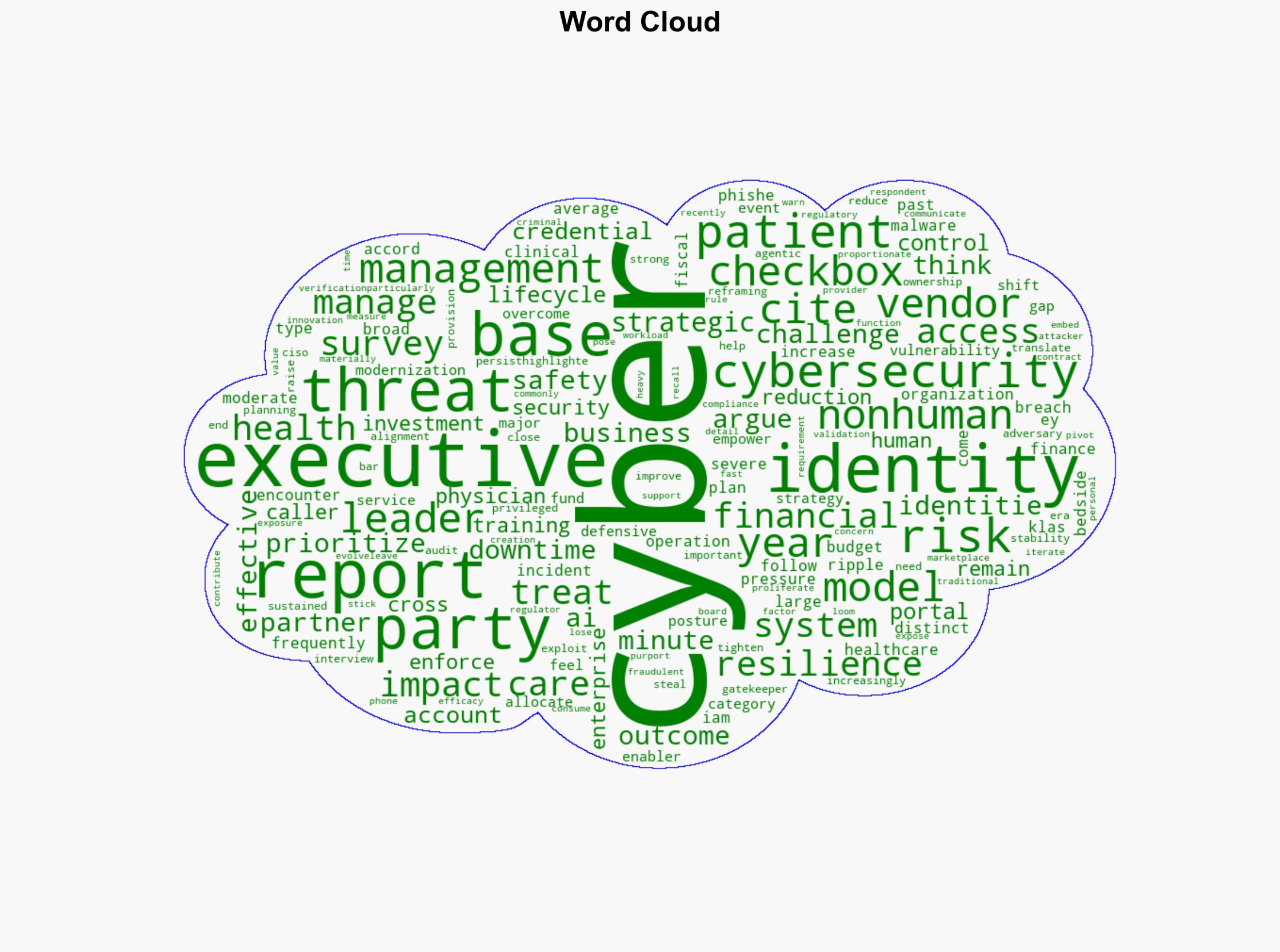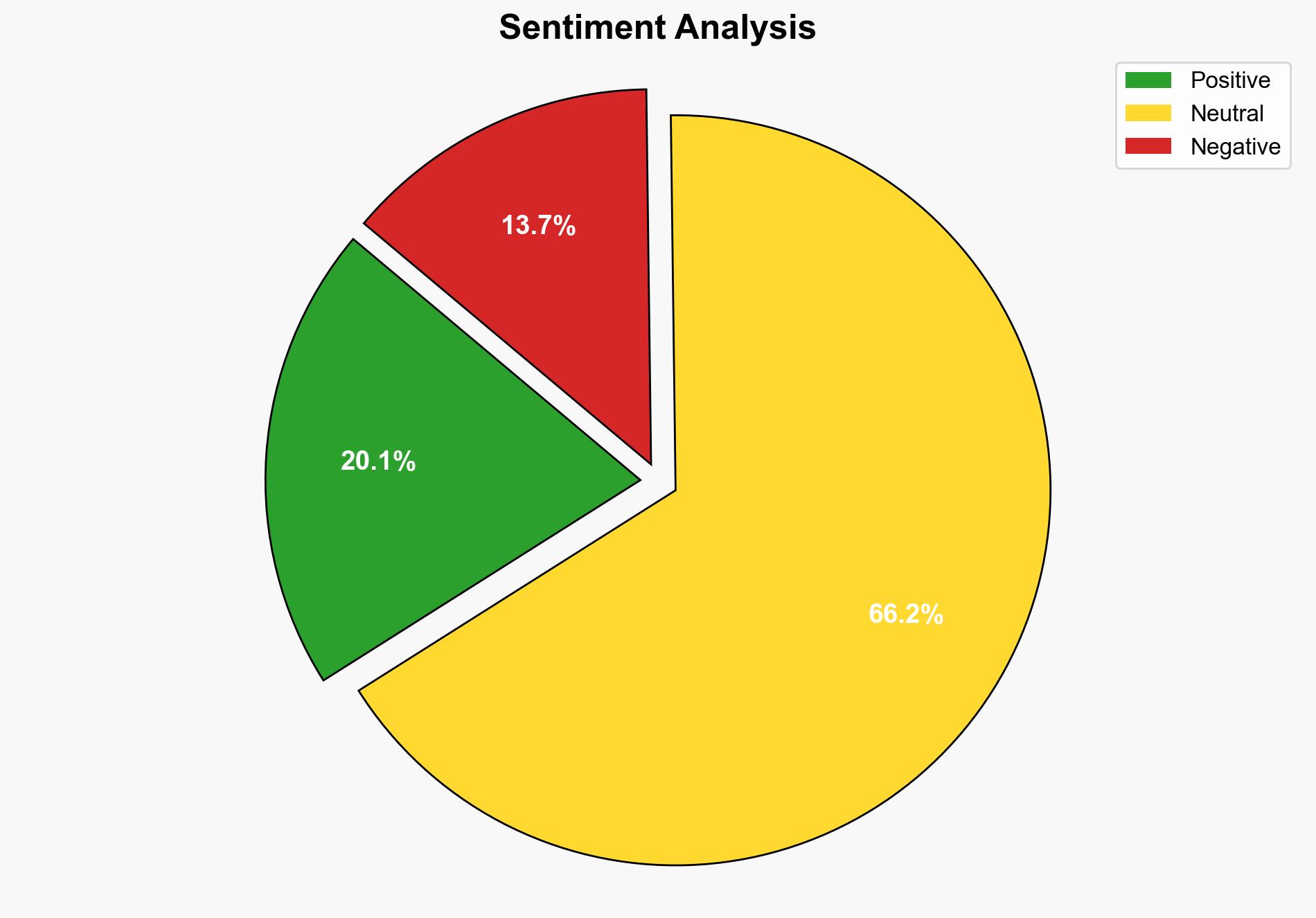Identity a Cornerstone of Cyber and Cyber a Cornerstone of Innovation KLAS EY Find – Healthsystemcio.com
Published on: 2025-11-05
Intelligence Report: Identity a Cornerstone of Cyber and Cyber a Cornerstone of Innovation KLAS EY Find – Healthsystemcio.com
1. BLUF (Bottom Line Up Front)
The most supported hypothesis is that healthcare organizations are increasingly integrating cybersecurity into their strategic planning to enhance resilience and innovation. Confidence level: Moderate. Recommended action: Healthcare organizations should prioritize identity and access management (IAM) and integrate cybersecurity into their business strategies to mitigate risks and leverage innovation opportunities.
2. Competing Hypotheses
1. **Hypothesis A**: Healthcare organizations are effectively integrating cybersecurity as a strategic enabler, leading to enhanced resilience and innovation.
2. **Hypothesis B**: Despite efforts, healthcare organizations are struggling to integrate cybersecurity effectively, resulting in persistent vulnerabilities and limited innovation.
Using the Analysis of Competing Hypotheses (ACH) 2.0, Hypothesis A is better supported. The report indicates a shift towards treating cybersecurity as a strategic enabler, with increased budgets for IAM and modernization efforts. However, challenges such as regulatory concerns and skill shortages persist, supporting elements of Hypothesis B.
3. Key Assumptions and Red Flags
– **Assumptions**: Organizations can effectively allocate resources to cybersecurity despite financial constraints. IAM improvements will significantly reduce vulnerabilities.
– **Red Flags**: Over-reliance on IAM without addressing broader security culture. Potential underestimation of nonhuman identity threats.
– **Blind Spots**: Lack of detailed analysis on how organizations plan to overcome skill shortages and regulatory burdens.
4. Implications and Strategic Risks
– **Economic**: Failure to integrate cybersecurity could lead to significant financial losses due to breaches.
– **Cyber**: Persistent vulnerabilities could escalate into more severe cyber incidents.
– **Geopolitical**: Increased cyber threats could strain international healthcare collaborations.
– **Psychological**: Ongoing breaches may erode trust in healthcare systems, impacting patient engagement.
5. Recommendations and Outlook
- **Mitigation**: Implement comprehensive IAM strategies, including multi-factor authentication and privileged access management.
- **Opportunities**: Leverage AI and automation to address skill shortages and enhance threat detection.
- **Scenario Projections**:
– **Best Case**: Effective integration of cybersecurity leads to reduced incidents and enhanced innovation.
– **Worst Case**: Continued vulnerabilities result in major breaches and financial losses.
– **Most Likely**: Gradual improvement in cybersecurity posture with ongoing challenges in skill and regulatory areas.
6. Key Individuals and Entities
The report does not specify individuals by name. It references healthcare executives and cybersecurity leaders as key stakeholders.
7. Thematic Tags
national security threats, cybersecurity, healthcare innovation, identity management





